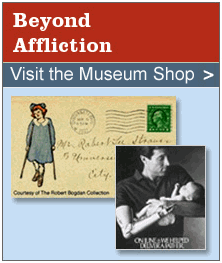Education: Essay
Asylum for the Deaf and Dumb
by John Crowley
The Connecticut Asylum for the Education and Instruction of Deaf and Dumb Persons, the first permanent school for deaf Americans, opened on April 15, 1817, in Hartford, Connecticut. The initial impetus for the school came from parents who wanted an education for their deaf children, and chief among these was a prominent Hartford, Connecticut surgeon named Mason Fitch Cogswell, whose daughter Alice was deaf after having contracted meningitis. Another was a lawyer and politician named Sylvester Gilbert, who had five deaf children. These two "parent advocates" (as they would be called today) enlisted other well-to-do parents in their efforts, including Eliphalet Kimball of Salem, Massachusetts.
It was not only money that these individuals brought to the project. Many had considerable political clout, and some were members of the Connecticut Legislature. Cogswell used the influence of this well-connected group to convince Connecticut ministers to conduct a census of their communities to find out how many deaf children there were in the state. It took three years (1812-1815) and identified 84 deaf persons, enough to warrant starting a school.
At first plans for the school depended on British models. Since the 1770s a small number of Americans had sent their deaf children to Thomas Braidwood's Academy in Edinburgh, Scotland, the best-known school for deaf education at that time, but this was a difficult and expensive undertaking. When John Braidwood, Thomas's grandson, arrived in America in 1812 with the idea of starting a branch of the school, Cogswell tried to persuade him to come to Connecticut. Braidwood preferred Philadelphia or New York, but he was apparently a feckless and probably alcoholic dreamer, and his schemes came to nothing.
Still Cogswell and his partners looked abroad for models, and in 1815 they persuaded a Hartford minister named Thomas Gallaudet, who had become interested in the education of Alice Cogswell, to go to Europe and study educational methods. Gallaudet first went to Edinburgh and the Braidwood Academy, but he disliked the Braidwood methodology -- students were taught to speak orally and instruction was strict -- and he disliked the elitism of a private, for-profit school. He preferred the methods and organization of the French Royal Institution for the Deaf in Paris, where French sign language was the medium of instruction and tuition was free to the poor. Gallaudet returned to Connecticut with a star instructor of the Paris school, Laurent Clerc, whom he had hired even though there was as yet no school for him to teach in.
There soon was, however. Cogswell and his partners, aided by the persuasive lectures and demonstrations that Gallaudet and Clerc gave before amazed New England audiences, raised $5,000 privately. More importantly, they received a charter of incorporation from the state, along with a grant of $5,000, the first public funding offered for the education of Americans with disabilities.
Because travel in early America was so costly and difficult, the Connecticut Asylum was established as a residential school. Instruction was given in sign, originally the French system Clerc used, gradually modified and evolving into what is now called ASL, American Sign Language. Instruction was given in math, reading, writing, geography, history, and most importantly in the Bible. The central motivation for education of the deaf, in the view of most educators and reformers, was so that deaf people would not be deprived of religious training.
Soon after its establishment, the Federal government awarded the Connecticut Asylum a grant of 23,000 acres of land in Alabama to help the school provide education for deaf people throughout the United States. The name of the school was thereupon changed to The American School for the Deaf. Meanwhile state schools had opened in New York, Pennsylvania and Kentucky.
The American School for the Deaf was the model for education of the deaf for much of the 19th century. Throughout the United States, state-supported or state-operated residential schools for the deaf were established, in which manual sign language was used for instruction. (Late in the century, a campaign against the use of sign and in favor of training in oral speech radically changed education for deaf people.) In addition to religious training and the "three r's," schools offered training in those trades that were thought suitable for deaf people, such as bookbinding, cabinet-making, printing, needlework, and shoe-making. Many of the top graduates remained at or returned to the schools as instructors, and networks of graduates kept in touch through newsletters and magazines. The schools were central to the development of a self-aware community of deaf people in the United States.






